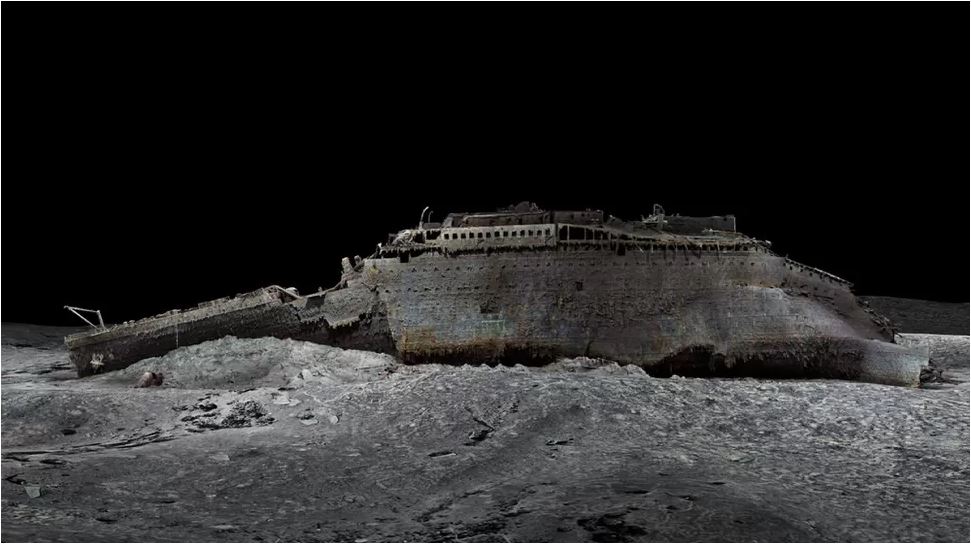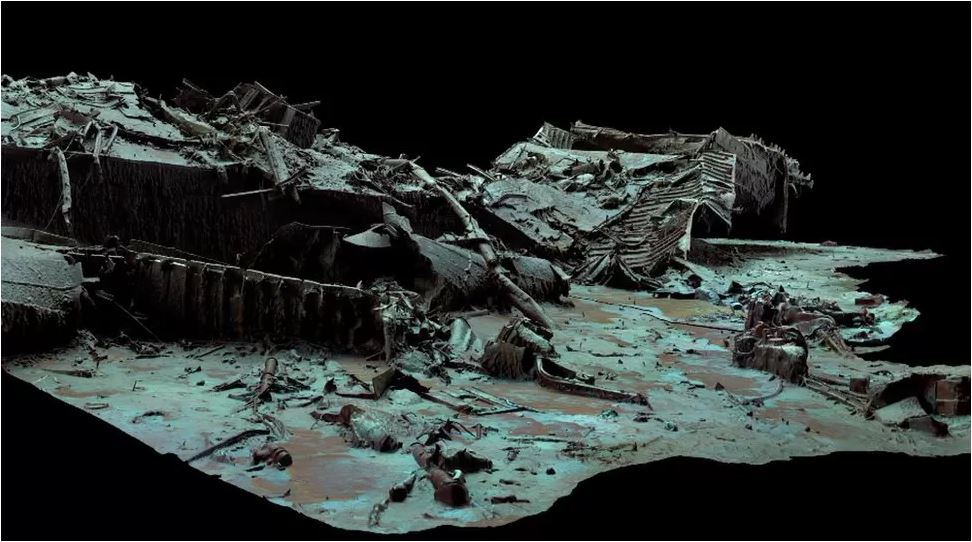
Majority famous shipwreck of all time, the Titanic, is revealed like never before, with the hope that new images will shed light on what happened on that spring night in 1912 when the ship collided with an underwater Atlantic iceberg.
By mapping the seafloor, researchers have created the first full-scale digital scan of the Titanic, which “rests” at a depth of 3,800 meters in the Atlantic.
A new take on the Titanic! New scans reveal the world’s most famous wreck that has never been seen before. They show the sunken ship in its entirety – as if the water was released… View here #Titanic
(Footage: @AtlanticProds/ Magellan) pic.twitter.com/1nOdfc7mWb— Rebecca Morelle (@BBCMorelle) May 17, 2023
The Titanic has been actively studied since its gigantic hull was discovered in 1985. However, due to its size and depth, underwater cameras were able to film it. only in parts, never in whole. That is, until today.
Now new scans of the wreckage, which reports the BBC fix the whole shiprevealing the full picture.
A cruise ship that sailed triumphantly from the port of Southampton on April 15, 1912, it rusts cut in two in the depths of the ocean, with bow and stern at a distance of about 800 meters from each other and a vast perimeter zone littered with the wreckage of a wrecked ship.
The scan was carried out in the summer of 2022 by Magellan Ltd, a seabed mapping company, and Atlantic Productions, a British production company preparing a documentary about this ultra-ambitious undertaking.

The submersibles, remotely controlled by the crew aboard the special craft, spent more than 200 hours mapping the wreckage along its entire length and width.
They recorded over 700,000 photos from all possible anglescreating a highly accurate 3D representation of it.
“The depth at which it is located, about four kilometers, is a challenge. There are also currents at the site, and at the same time, we cannot touch anything, so as not to damage the wreckage, ”explains Gerhard Seifert, head of Magellan’s mission planning department.

“And another problem was how we had to map every centimeter, even those parts that were not of particular interest.such as dirt in the rubble zone, but this was also necessary to complete the picture,” he says.
Somehow the scan captured not only the full size of the wreck, but minute details such as serial number on one of the screws ship.
The bow, now covered in “stalactites” of rust, is immediately recognizable, in contrast to the stern, which is now a chaotic mass of metal. In the vicinity, in the sediments of the seabed, scattered objects are found, from metal parts of ship decoration, figurines and sealed bottles of champagne, to personal belongings of passengers – dozens of shoes among them.
“There are still questions, fundamental questions that need to be answered about the ship,” Parks Stevenson, an analyst with the BBC, told the BBC, explaining that the model is “one of the first key steps in moving the Titanic case towards an evidence-based investigation.” not speculation.”
According to him, the study of these images can provide new information about what exactly happened on that fateful night in 1912.
“We don’t quite understand the nature of the iceberg impact. We don’t even know if he hit the right side, as shown in all the films,” he explains.
The traces of water and time are more than evident on the wreckage, parts of which are increasingly decomposing. Historians understand that they do not have enough time on their side to fully comprehend events.
However, recent advances in technology they “freeze” time for a whilewhich will allow experts to study the sunken ship in such a way as to “uncover” its secrets.
Source: BBC
Source: Kathimerini
Anna White is a journalist at 247 News Reel, where she writes on world news and current events. She is known for her insightful analysis and compelling storytelling. Anna’s articles have been widely read and shared, earning her a reputation as a talented and respected journalist. She delivers in-depth and accurate understanding of the world’s most pressing issues.